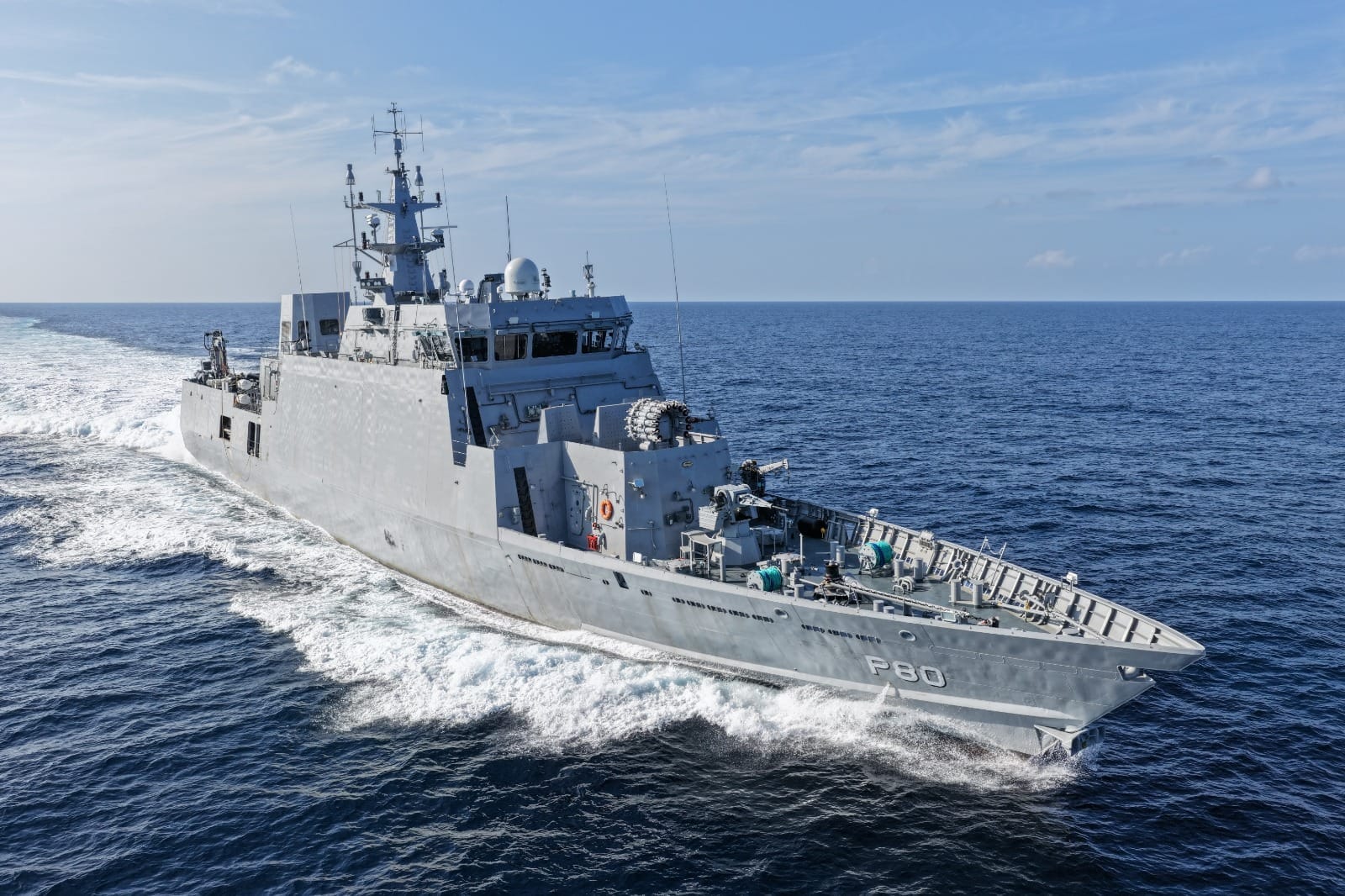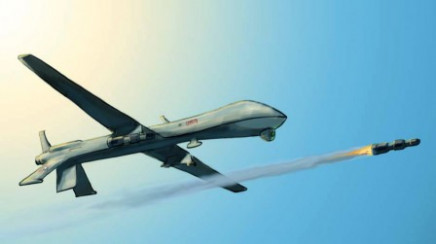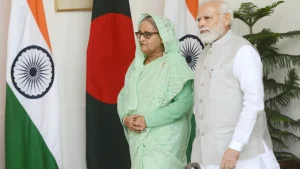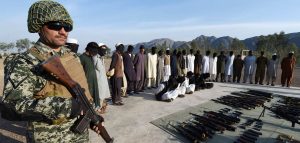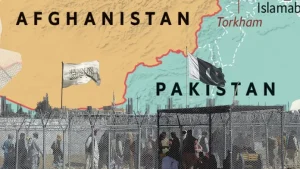Volume 2, Issue 8 — August 2025
Overview
In August, as many as 89 violent incidents across Pakistan left 281 people dead, including 82 security forces personnel. There was a slight decline both in terrorism-related incidents and fatalities in August as compared to July when 95 violent incidents claimed 327 lives. Most of the violent incidents were concentrated in Khyber Pakhtunkhwa (KP) and Balochistan provinces. The slight decline in incidents and fatalities could be due to flashfloods in parts of KP, the temporary suspension of train service, the nighttime ban on public transport in Balochistan, as well as the suspension of the internet in Balochistan for a good part of August. These bans denied Baloch separatists the ability to disrupt public transport to fuel their propaganda warfare as well as inflict violence.
Notwithstanding the slight decline in violence and fatalities, the lethality and diversity of terrorist tactics in Pakistan is concerning. On the one hand, high-profile attacks have increased, targeting security camps, convoys and check posts across KP and Balochistan. On the other hand, terrorists are employing commercially available quadcopters for intelligence, surveillance and reconnaissance (ISR) and violent operations. These trends point to the diffusion of technology in Pakistan’s threat landscape which will result in greater lethality and expansion of terrorists’ attack capabilities to Pakistan’s urban areas in the long term.
Alarmingly, attacks by Tehreek-e-Taliban Pakistan (TTP) and Ittehad-ul-Mujahideen Pakistan (IMP) – an alliance of the Hafiz Gul Bahadur Group, Lashkar-e-Islam (LI) and Harkat-e-Inqilab-e-Islami Pakistan (HIIP) – on military’ supplies in the Newly Merged Districts (NMDs) points to imitation of Baloch separatists’ blockade of main highways in Balochistan to undermine government control, intimidate people, and create an impression that the highways are hostile and insecure for the security forces. This imitation of inter-group tactics brings into sharp focus the transfer of knowledge, skills and tactics in an era of hyper connectivity and globalization.
Likewise, the ability of TTP and IMP to successfully weaponise and employ quadcopters points to inter-group transfer of knowledge and resources from the Taliban and Al-Qaeda. Their sanctuary in Afghanistan has played a critical role in allowing them to procure quadcopters, experiment with them and hone their skills to successfully use them on the battlefield. Hence, without addressing the regrouping of TTP, IMP and the Baloch Liberation Army (BLA) in Afghanistan and the support extended to them by the Taliban, Pakistan’s internal security challenges will continue to multiply. Even Pakistan’s new Afghan policy of not allowing security challenges to hold cooperation in the economy and regional connectivity hostage seems to have fallen by the wayside.
In response to the above-mentioned multifaceted challenges, Pakistan carried out a clearance operation in Bajaur to dislodge a build of TTP militants, continued Intelligence Based Operations (IBOs) across the country, and took additional security measures to ensure that separatists in Balochistan were not given any opening to wreak havoc on August 14, Independence Day and August 27, the death anniversary of Baloch politician and elder Nawab Akbar Bugti. Pakistan also enhanced its counterterrorism cooperation with the United States (US) which reflected in the Counterterrorism Dialogue between both sides in Islamabad and in Washington’s decision to put BLA and its alias, the Majeed Brigade, on the list of Foreign Terrorist Organisations (FTO). This marked a diplomatic win and vindication of Pakistan’s counterterrorism narrative. However, without weakening the BLA and other groups kinetically, and using non-kinetic options to address the root causes of the conflict in Balochistan, the separatist violence will not subside.
Against this backdrop, the August conflict watch has discussed key trends of violence and state responsed, while forecasting how conflict trendlines in Pakistan may look like in September.
Trends
Quadcopter Videos on Social Media and TTP’s Claims of Using Anti-Drone Guns
In their propaganda statements and videos circulated on various social media platforms, TTP and IMP shared footage of drone attacks along with responsibility claims. IMP, for instance, claimed nine quadcopter attacks in its monthly infographic detailing violent operations. IMP-linked social media accounts also shared videos showing the virtual takeoff of quadcopters, as well as a footage – the group’s first formal video – showing a mortar dropped onto a military fort in North Waziristan from a drone.
Quadcopters attacks have emerged as a new tactic in the toolkit of terrorist groups in KP. So far, only TTP and IMP-linked terrorist groups have weaponised drones. Though the BLA and other Baloch separatist groups use quadcopters for propaganda and surveillance, they have not weaponised them. The footage circulated on social media indicates the growing ability of militant groups to deploy drones for attacks with precision and accuracy. While these quadcopters have so far dropped small payloads causing limited damage, their lethality is likely to increase with the passage of time. The rising use of quadcopters in KP is also points to a steady supply chain network. It brings into sharp focus the transfer of inter-group knowledge and resources to TTP and IMP by the Taliban and Al-Qaeda.
Separately, at least three unverifiable claims were issued by TTP on Telegram and other social media platforms regarding the use of anti-drone guns to shoot down Pakistani military quadcopters. The first claim emerged on August 3, when TTP showed a quadcopter used by the military, maintaining that it had been brought down with an anti-drone gun (type not specified) over a village in Dera Ismail Khan district. Likewise, another video was released on August 21 in which the group declared it had shot down two Pakistani military drones during an armed clash in South Waziristan. The third claim surfaced on August 27, showing what the group alleged was a downed drone in Khyber’s Tirah Valley. Independent verification of such claims is critical to understanding their true implications.
Attacks on Military’s Supplies in the NMDs
Various videos posted by pro-TTP and IMP accounts on different social media platforms show increasing attacks by both groups on military ration supplies in the NMDs. The seemingly new tactic aims to make the highways and roads in the NMDs hostile and insecure for the movement of Pakistani security forces. Repeated roadside Improvised Explosive Device (IED) attacks and quadcopter strikes, coupled with militant ambushes targeting military ration and construction supplies, point to this trend. For instance, on August 3, TTP militants torched a supply truck in South Waziristan carrying construction materials for the 40 Punjab Regiment Army Unit and abducted the driver. In another video, militants can be seen emptying cans of cooking oil and destroying other food items while attacking a supply truck. They have also threatened local transporters and contractors with dire consequences if they do not stop providing food supplies to the military. Likewise, another video circulated on August 4 shows gun-toting TTP militants patrolling a road in Hangu district. Similarly, a video circulated on August 15 showed TTP militants roaming on the Hakla-Dera Ismail Khan Motorway (M-14) in broad daylight.
The notion of rendering highways hostile and insecure appears to be an imitation of Baloch separatists’ campaign of blocking highways in Balochistan to carryout snap-checking of public transport, attacks trucks and shipping containers carrying minerals extracted from the restive province, as well as targeting ethnic Punjabis by identifying them through their ID cards.
Harkat Inqilab-e-Islami Pakistan’s (HIIP) Video of Paramilitary Training
On August 9, HIIP – one of the three factions in the IMP alliance – released a propaganda video marking its first attack in South Waziristan, the birthplace and stronghold of TTP. This point is contextually important because IMP and TTP are locked in a fierce turf war to retain and win the loyalties of smaller militant factions in KP and their territorial strongholds. As TTP has started making inroads into North Waziristan, the traditional powerbase of Hafiz Gul Bahadur, the latter has entered into an alliance with HIIP and Lashkar-e-Islam (LeI) to counterbalance TTP’s expansion.
In the purported video, a militant faction from South Waziristan under Khalid Bin Walid joined HIIP by pledging an oath of allegiance. Notably, the HIIP fighters and commanders are primarily former members of Al-Qaeda’s 313 Brigade. Establishing new groups like HIIP reflects Al-Qaeda’s localisation strategy in the Afghanistan-Pakistan region, aimed at embedding itself with local militant actors to sustain its operations in the region.
ISKP’s Attack on a Military Convoy in Bajaur
On August 21, as the Pakistani military intensified its efforts to dislodge TTP from different areas of Bajaur district, the Islamic State of Khorasan Province (ISKP) targeted a military convoy in the Inayat Kilay area with a Vehicle-Borne Improvised Explosive Device (VBIED), killing one soldiers and wounding six others.
In recent years, Bajaur has witnessed several terrorist attacks by ISKP. The district shares a border with Afghanistan’s Kunar province, where ISKP had been relatively strong before being dislodged by the Taliban and forced to retreat into Bajaur. ISKP has killed several workers of rival Deobandi Jamiat Ulema-e-Islam Fazal (JUI-F) for supporting the Taliban ideologically, espousing territorial nationalism, and more critically, aiding the Taliban’s anti-ISKP operations. Recent months have witnessed a surge of TTP militants in Bajaur, particularly in the Mamund subdistrict, prompting the military to launch a clearance operation. This followed the failure of a local jirga – spanning seven rounds of negotiations with the TTP – to convince the group to vacate the area and return to Afghanistan.
TTP Warning Bajaur Locals in a Mosque
On August 10, a TTP commander delivered a message from Mufti Nur Wali Mehsud to locals in a mosque in Bajaur. Brandishing an M-4 carbine rifle, he announced that all locals were forgiven for their past connections with the Pakistani security forces and need not fear TTP’s presence. At the same time, he warned, particularly targeting the youth and teenagers, that the TTP possessed modern communication and surveillance equipment – allegedly left behind by the US in Afghanistan – to monitor the digital communications, a claim that remains unverifiable. He cautioned that anyone found acting as an informer or spy for the Pakistani military would face severe punishment.
It bears mention that TTP militants, including Afghans and Uzbeks, have gathered in large number in Upper and Lower Mamund and adjoining areas of Bajaur. It prompted the Pakistani military to launch a military operation to dislodge them after a local jirga failed to convince TTP leaders to return to Afghanistan or vacate the residential area and face Pakistani military in open mountains. TTP refused to vacate the areas maintaining they are locals and will not go anywhere. At the same time, they assured the jirga members that they will not target the Pakistani military unless they are attacked. Such jirgas have increased the legitimacy and influence of TTP while bringing into sharp focus the deteriorating security situation in Bajaur.
TTP’s Condemnation of Pakistani Government’s Decision to Demolish 50 Mosques in Islamabad Illegally Constructed on Official Land
Pakistani government’s alleged decision to demolish 50 mosques in Islamabad illegally constructed on official land was criticised by TTP and pro-Taliban accounts on various social media channels, terming the move anti-Islamic. TTP in its official statement lamented the decision to demolish old mosques, such as Faisal and Madni mosques, which it claimed predated Pakistan’s inception. TTP upheld that mosques are one of the most important requirements of Muslims and once a mosque is constructed on a land, its status as a worship place is permanent, i.e., the land belongs to the Almighty alone, and no one can claim its ownership. Furthermore, TTP maintained that this is the consensual position of all schools of jurisprudence in Islam.
While opposing the government’s alleged decision to demolish the mosques, TTP exploited it to frame it the former as anti-Islamic and encouraged hostile action against it. The terror group urged the public to forcefully resists mosques’ demolition as the land belonged to no one but the Almighty. Various religious groups, including JUI-F, held a protest against the demolition of the Madni Mosque near Rawal Dam Chowk. However, the government clarified that no plan was under consideration to demolish 50 mosques. Furthermore, it maintained that Madni Mosque was rebuilt at an alternative site with the consent of the mosque’s administration.
The IED Attacks on Jaffer Express, Travel Bans and Suspension of the Internet
On August 10, six coaches of the Peshawar-bound Jaffer Express train were derailed near Quetta in an Improvised Explosive Device (IED) explosion. However, no loss of life was reported, and the authorities rescued all passengers to Quetta and suspended the train service keeping in view the evolving security situation. This was the fourth attack on Jaffer Express since it resumed operations following its hijacking in March that left 33 BLA terrorists and 23 soldiers dead during the rescue operations. Three staff members of the Pakistan Railways and five passengers also lost their lives during the clearance operation.
Two of the three remaining attacks witnessed in June and July targeted the train in Sindh’s Shikarpur district, while the third attack was reported from Balochistan’s Sibi district in August. It bears mention that the government maintains that the July derailment of Jaffer Express was caused by a technical fault instead of an IED explosion.
Last August, Baloch separatist carried out several multiple coordinated attacks on August 14 and August 27. The August 14 wave of attacks was to spread fear and deter people from celebrating Independence Day. Meanwhile the August 27 spate of attacks was part of Baloch separatist groups’ so-called Operation Herof which was launched to avenge the killing of Blaoch political and elder Nawab Akbar Khan Bugti. To avert a similar situation this year, on August 7, the Pakistani authorities suspended internet service across Balochistan until August 31. Likewise, on August 13, the Balochistan government announced a nighttime ban (5am-5pm) on the movement of public transport vehicles. It also warned that route permits of transport companies found violating the ban will be cancelled. Similarly, following the August 10 derailment of Jaffer Express, a four-day halt on all train services to and from Balochistan was also announced. While some people view such drastic steps as a victory for separatists, they were helpful in keeping the separatist violence in control.
Separatist Attacks on a Police Station and Border Security Compound in Washuk
On August 12, Baloch separatists attacked a police station and a border force compound in Balochistan’s Washuk district and killed nine Pakistani soldiers and wounded six others. The soldiers were ambushed and killed while they were on their way to respond to the separatists’ attack on the police station and the border security compound. Reportedly, around 40-50 Baloch militants riding on motorbikes attacked the two targets and ransacked them.
In recent months, Baloch separatists have tried to challenge the state’s control by briefly occupying small towns in remote areas and portraying themselves as an alternative authority. During the brief capture before security forces reach the site, they record videos to boost their propaganda, ransack government buildings, especially police stations and banks, and snatch weapons before retreating.
Al-Qaeda in the Indian Sub-continent (AQIS) Statement of Flash Floods in Pakistan
On August 19, Al-Qaeda in the Indian Sub-continent (AQIS) issued a statement on flash floods caused by monsoon rains in Pakistan. After condoling with people affected by floods and urging them to show patience and fortitude in the face of the natural calamity, the terror group blamed devious Muslim governments in Islamic countries from Shria law as the core reason of floods. AQIS also blamed them for corruption, administrative incompetence and bad policies resulting in floods. At the same time, it apportioned the blame to unrestrained industrialization, carbon emissions and pollution, leading to rising global temperatures, drastic climate changes, glacial melts and frequent floods.
AQIS upheld that various jihadist groups linked to Al-Qaeda are engaged in a four-front battle to save Muslims and Islam, otherwise it would have come to rescue flood-affected people in Pakistan. It also urged people and militants who are in urban areas and not confronted with security challenges to generously help people.
AQIS’ statement reeks of opportunism and brings into sharp focus its irrelevance in South Asia’s context. It has failed to carry out an attack for a long period and tries to remain in news cycle through propaganda statements and publications. It is typical of terrorist groups to appropriate natural calamities in their ideological frameworks for validation while targeting their opponents to position themselves as people’s real well wishers and saviours.
Response
Military Operation in Bajaur
Following the failure of a local jirga in Bajaur to convince TTP militants to return to Afghanistan or vacate residential areas and face the Pakistani military in the open mountains, a targeted military operation was launched in various areas of Mamund on August 12. As many as 55,000 people have been displaced due to the military operations. Later, this number rose 100,000 . Though a formal announcement preceding the launch of the operation was not made, it is a largescale operation to push out TTP militants ahead of winters. This is a second major military operation against TTP in Bajaur. Before this, in 2009, Pakistan carried out Operation Sher Dil and claimed victory in 2010. By August 25, five villages (Aseerai Kalan, Sari Mian Gana, Lundai Kalan, Bilal Masjid Tarkho, and Shamsher Garh Qila Tarkho) in Mamund were cleared and military allowed residents to return amid claims of restoring peace and full state authority in the region.
The US Designation of BLA and the Majeed Brigade as Foreign Terrorist Organisations
On August 12, the US State Department listed BLA and its suicide unit, the Majeed Brigade, as the Foreign Terrorist Organisations (FTO). It was announced while the Pakistani army chief Field Marshal Asim Munir was visiting the US for the second time in a short span. The move underscores alignment of the US-Pakistan security interests in the region. It will pave the way for greater operational coordination and intelligence sharing under the counterterrorism framework. It bears mention that since 2019 BLA is already on the US list of Specially Designated Terrorist Groups.
The FTO listing will make it difficult for BLA to raise fund internationally, procure weapons and publicise its propaganda on open social media platforms. Apart from asset freezes and financial sanctions, the move also includes travel bans and curbs on material support. The FTO listing will also result in difficulties for BLA’s online supporters and sympathizers to post its propaganda on open social media platforms like Facebook, Instagram, TikTok, X and YouTube.
The FTO listing is a symbolic but significant diplomatic victory for Pakistan’s military establishment. It is vindication of its narrative that BLA and its alias Majeed Brigade are terrorist groups. Nonetheless, the threats posed by BLA and Majeed Brigade will likely persist despite this ban, and Pakistani security forces will have to weaken it organisationally and operationally while the provincial and central governments will have to address the genuine grievances of the Baloch masses through a political process to restore permanent peace.
The US-Pakistan Counterterrorism Dialogue
On August 12, the US and Pakistan held counterterrorism dialogue in Islamabad and reaffirmed their joint commitment to indiscriminately fight all forms of terrorism. Both sides agreed to develop effective approaches to fight terrorist groups, including ISKP, TTP and BLA. Furthermore, there was consensus between both sides to build institutional frameworks to counter the use of emerging technologies for terrorist purposes.
It is an important development which underscores close counterterrorism collaboration between the US and Pakistan. Islamabad’s success in winning Washington’s support against TTP and BLA is critical. Likewise, mentioning the use of emerging technologies in the joint statement is equally significant highlighting official acknowledgement at the highest level from Pakistan about their threat. While the US may not provide generous funding or security help to Pakistan to fight these threats, it will continue to assist through diplomatic and technical support, training and capacity building of the law enforcement agencies as well as intelligence sharing and coordination.
Drone Strikes in Khost and Nangarhar
On August 26, Pakistani drones targeted alleged TTP hideouts with drone strikes in Khost and Nangarhar provinces of Afghanistan. The Taliban, while condemning the drone attacks for violating Afghanistan’s sovereignty, claimed that those killed in these strikes were Afghan civilians, including women and children. Furthermore, the Taliban warned Pakistan of consequences if such actions were repeated in future and urged it to solve problems through negotiation. The Taliban also issued a démarche to Pakistan’s Ambassador to Afghanistan Obaid ur Rehman Nizamani. In separate statements, both TTP and IMP also condemned Pakistani drone strikes in Afghanistan, while rejecting Pakistani claims of their presence on Afghanistan and rumours propagated by some pro-military social media accounts of a fight between them.
40 TTP Militants Killed in Pakistan’s Drone Strike in Zhob, Balochistan
On August 7-9, Pakistani drones intercepted and eliminated around 40 TTP militants, including Afghans and Pakistanis, as they tried to cross into Balochistan from Afghanistan. Following their elimination, security forces carried out sanitisation operations in the Afghanistan-Pakistan border area and killed three more terrorists while discovering arms and ammunitions from their possession. Following a jirga , the bodies of slain Pakistani and Afghan militants were moved to Afghanistan from Balochistan via Paktika province for burial on August 24.
The incident provides yet another evidence of not only TTP’s continued sanctuary in Afghanistan and cross-border terrorism but also the involvement of Afghan nationals carrying out attacks in Pakistan despite a religious directive issued by the Taliban forbidding Afghan nationals from participating in “jihad” outside of Afghanistan. The Taliban’s directive called “jihad” in Pakistan offensive which was not obligatory for Afghans as they did not have the means and capabilities. However, TTP’s chief Nur Wali Mehsud in a video interview defended TTP’s militancy in Pakistan as defensive “jihad” and maintained that his group has more than sufficient manpower for guerilla warfare. He urged Afghan nationals to support the group through donations instead of participating in attacks. It is critical to note that the Taliban have taken a neutral position on TTP’s militant activities in Pakistan, and they term it as Pakistan’s internal matter. However, they do not categorically condemn TTP’s activities.
Outlook
Violence is unlikely to subside in September as Pakistan’s reproachment with the Taliban regime has collapsed and high-profile suicide attacks against the security forces in KP have resumed. The buildups of TTP militants in Tirah Valley of Khyber and Mamund subdistrict of Bajaur underscore steady recruitment and growing capabilities of the terror network. Pakistan will have to simultaneously work on a three-pronged synergetic security framework combining border security, counterterrorism and diplomatic efforts to put pressure on the Taliban to withdraw support from TTP, IMP and BLA.
The diffusion of emerging technologies necessitates revisiting existing counterterrorism framework and employ anti-drone capabilities. Pakistan also needs to enhance digital surveillance capabilities to undermine the terrorists’ information warfare and develop a working relationship with technology companies to gain their assistance in reversing the former’s digital footprints. Pakistan has its counterterrorism work cut out and it will have to invest in technical, operational and lethal capabilities of its forces on the one side, and build non-kinetic responses to respond to extremist narratives on the other.



